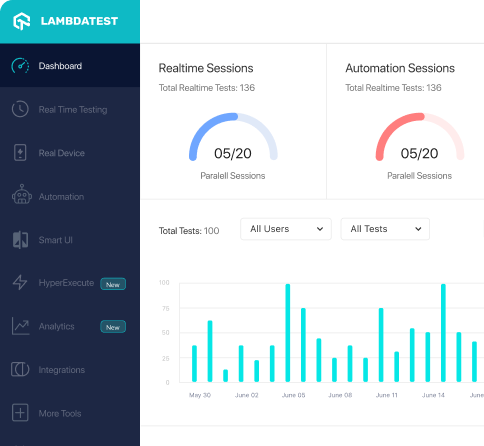How to use AtomicReferenceArrayAssert_containsExactly_Test class of org.assertj.core.api.atomic.referencearray package
Best Assertj code snippet using org.assertj.core.api.atomic.referencearray.AtomicReferenceArrayAssert_containsExactly_Test
...13package org.assertj.core.api.atomic.referencearray;14import org.assertj.core.api.AtomicReferenceArrayAssert;15import org.assertj.core.api.AtomicReferenceArrayAssertBaseTest;16import static org.mockito.Mockito.verify;17public class AtomicReferenceArrayAssert_containsExactly_Test extends AtomicReferenceArrayAssertBaseTest {18 19 @Override20 protected AtomicReferenceArrayAssert<Object> invoke_api_method() {21 return assertions.containsExactly("Yoda", "Luke");22 }23 @Override24 protected void verify_internal_effects() {25 verify(arrays).assertContainsExactly(info(), internalArray(), new String[] {"Yoda", "Luke"});26 }27}...AtomicReferenceArrayAssert_containsExactly_Test
Using AI Code Generation
1package org.assertj.core.api.atomic.referencearray;2import org.assertj.core.api.AtomicReferenceArrayAssert;3import org.assertj.core.api.AtomicReferenceArrayAssertBaseTest;4import org.junit.jupiter.api.DisplayName;5import org.junit.jupiter.api.Test;6import static org.mockito.Mockito.verify;7@DisplayName("AtomicReferenceArrayAssert containsExactly")8class AtomicReferenceArrayAssert_containsExactly_Test extends AtomicReferenceArrayAssertBaseTest {9 void should_delegate_to_array() {10 assertAll(() -> {11 Object[] array = new Object[0];12 assertDoesNotThrow(() -> assertions.containsExactly(array));13 verify(arrays).assertContainsExactly(info(), internalArray(), array);14 }, () -> {15 Object[] array = new Object[0];16 assertDoesNotThrow(() -> assertions.containsExactly(array, array));17 verify(arrays).assertContainsExactly(info(), internalArray(), array, array);18 }, () -> {19 Object[] array = new Object[0];20 assertDoesNotThrow(() -> assertions.containsExactly(array, array, array));21 verify(arrays).assertContainsExactly(info(), internalArray(), array, array, array);22 }, () -> {23 Object[] array = new Object[0];24 assertDoesNotThrow(() -> assertions.containsExactly(array, array, array, array));25 verify(arrays).assertContainsExactly(info(), internalArray(), array, array, array, array);26 }, () -> {27 Object[] array = new Object[0];28 assertDoesNotThrow(() -> assertions.containsExactly(array, array, array, array, array));29 verify(arrays).assertContainsExactly(info(), internalArray(), array, array, array, array, array);30 });31 }32}AtomicReferenceArrayAssert_containsExactly_Test
Using AI Code Generation
1import org.assertj.core.api.AtomicReferenceArrayAssert;2import org.assertj.core.api.AtomicReferenceArrayAssert_containsExactly_Test;3public class AtomicReferenceArrayAssert_containsExactly_Test_using_comparator_Test extends AtomicReferenceArrayAssert_containsExactly_Test {4 protected AtomicReferenceArrayAssert<Object> invoke_api_method() {5 return assertions.containsExactly(someInfo(), array("Yoda", "Luke"), getCaseInsensitiveStringComparator());6 }7 protected void verify_internal_effects() {8 verify(arrays).assertContainsExactly(getInfo(assertions), internalArray(), array("Yoda", "Luke"), getCaseInsensitiveStringComparator());9 }10}AtomicReferenceArrayAssert_containsExactly_Test
Using AI Code Generation
1package org.assertj.core.api;2import static org.assertj.core.api.Assertions.assertThat;3import static org.mockito.Mockito.verify;4import java.util.concurrent.atomic.AtomicReferenceArray;5import org.assertj.core.api.AtomicReferenceArrayAssertBaseTest;6import org.junit.Test;7public class AtomicReferenceArrayAssert_containsExactly_Test extends AtomicReferenceArrayAssertBaseTest {8 public void invoke_api_like_user() {9 AtomicReferenceArray<String> actual = new AtomicReferenceArray<>(new String[] { "Yoda", "Luke", "Leia" });10 assertThat(actual).containsExactly("Yoda", "Luke", "Leia");11 verify(arrays).assertContainsExactly(getInfo(assertions), getActual(assertions), new String[] { "Yoda", "Luke", "Leia" });12 }13 public void invoke_api_like_user_with_null() {14 AtomicReferenceArray<String> actual = new AtomicReferenceArray<>(new String[] { "Yoda", null, "Leia" });15 assertThat(actual).containsExactly("Yoda", null, "Leia");16 verify(arrays).assertContainsExactly(getInfo(assertions), getActual(assertions), new String[] { "Yoda", null, "Leia" });17 }18 public void invoke_api_like_user_with_array_of_null() {19 AtomicReferenceArray<String> actual = new AtomicReferenceArray<>(new String[] { null, null, null });20 assertThat(actual).containsExactly(null, null, null);21 verify(arrays).assertContainsExactly(getInfo(assertions), getActual(assertions), new String[] { null, null, null });22 }23 protected AtomicReferenceArrayAssert<String> invoke_api_method() {24 return assertions.containsExactly("Yoda", "Luke", "Leia");25 }26 protected void verify_internal_effects() {27 verify(arrays).assertContainsExactly(getInfo(assertions), getActual(assertions), new String[] { "Yoda", "Luke", "Leia" });28 }29}Blogs
Check out the latest blogs from LambdaTest on this topic:
In addition to the four values, the Agile Manifesto contains twelve principles that are used as guides for all methodologies included under the Agile movement, such as XP, Scrum, and Kanban.
Software testing is fueling the IT sector forward by scaling up the test process and continuous product delivery. Currently, this profession is in huge demand, as it needs certified testers with expertise in automation testing. When it comes to outsourcing software testing jobs, whether it’s an IT company or an individual customer, they all look for accredited professionals. That’s why having an software testing certification has become the need of the hour for the folks interested in the test automation field. A well-known certificate issued by an authorized institute kind vouches that the certificate holder is skilled in a specific technology.
In today’s world, an organization’s most valuable resource is its customers. However, acquiring new customers in an increasingly competitive marketplace can be challenging while maintaining a strong bond with existing clients. Implementing a customer relationship management (CRM) system will allow your organization to keep track of important customer information. This will enable you to market your services and products to these customers better.
In some sense, testing can be more difficult than coding, as validating the efficiency of the test cases (i.e., the ‘goodness’ of your tests) can be much harder than validating code correctness. In practice, the tests are just executed without any validation beyond the pass/fail verdict. On the contrary, the code is (hopefully) always validated by testing. By designing and executing the test cases the result is that some tests have passed, and some others have failed. Testers do not know much about how many bugs remain in the code, nor about their bug-revealing efficiency.
Howdy testers! June has ended, and it’s time to give you a refresher on everything that happened at LambdaTest over the last month. We are thrilled to share that we are live with Cypress testing and that our very own LT Browser is free for all LambdaTest users. That’s not all, folks! We have also added a whole new range of browsers, devices & features to make testing more effortless than ever.
Automation Testing Tutorials
Learn to execute automation testing from scratch with LambdaTest Learning Hub. Right from setting up the prerequisites to run your first automation test, to following best practices and diving deeper into advanced test scenarios. LambdaTest Learning Hubs compile a list of step-by-step guides to help you be proficient with different test automation frameworks i.e. Selenium, Cypress, TestNG etc.
LambdaTest Learning Hubs:
- JUnit Tutorial
- TestNG Tutorial
- Webdriver Tutorial
- WebDriverIO Tutorial
- Protractor Tutorial
- Selenium 4 Tutorial
- Jenkins Tutorial
- NUnit Tutorial
- Jest Tutorial
- Playwright Tutorial
- Cypress Tutorial
- PyTest Tutorial
YouTube
You could also refer to video tutorials over LambdaTest YouTube channel to get step by step demonstration from industry experts.
Most used methods in AtomicReferenceArrayAssert_containsExactly_Test
Try LambdaTest Now !!
Get 100 minutes of automation test minutes FREE!!



